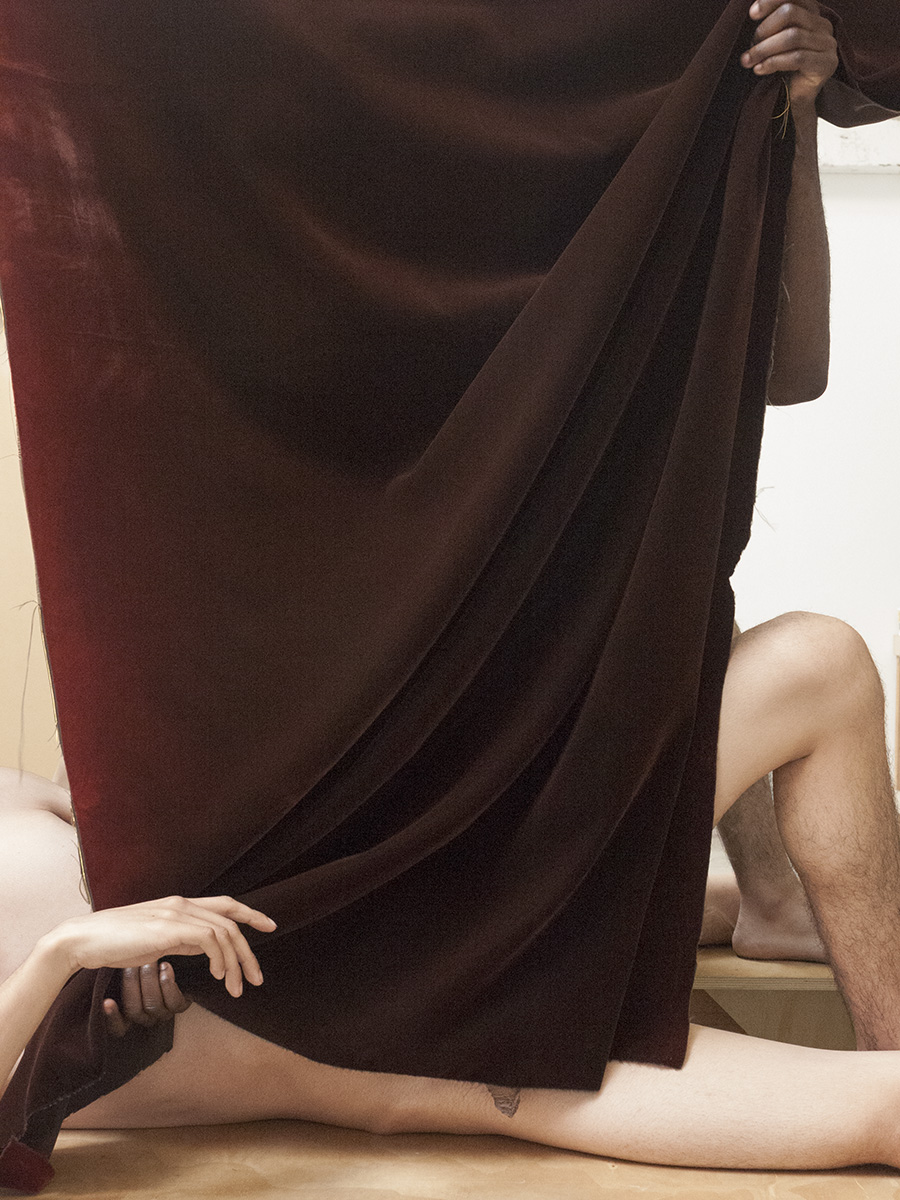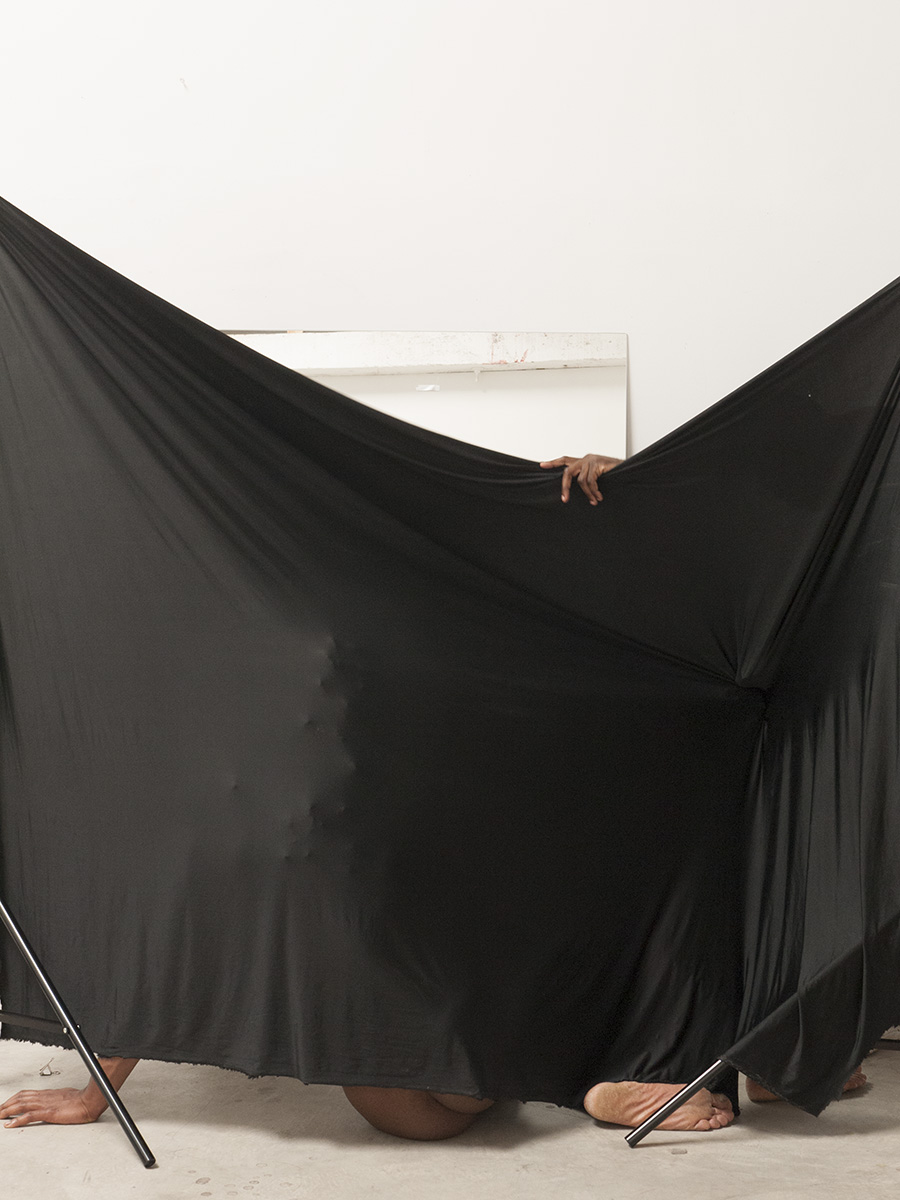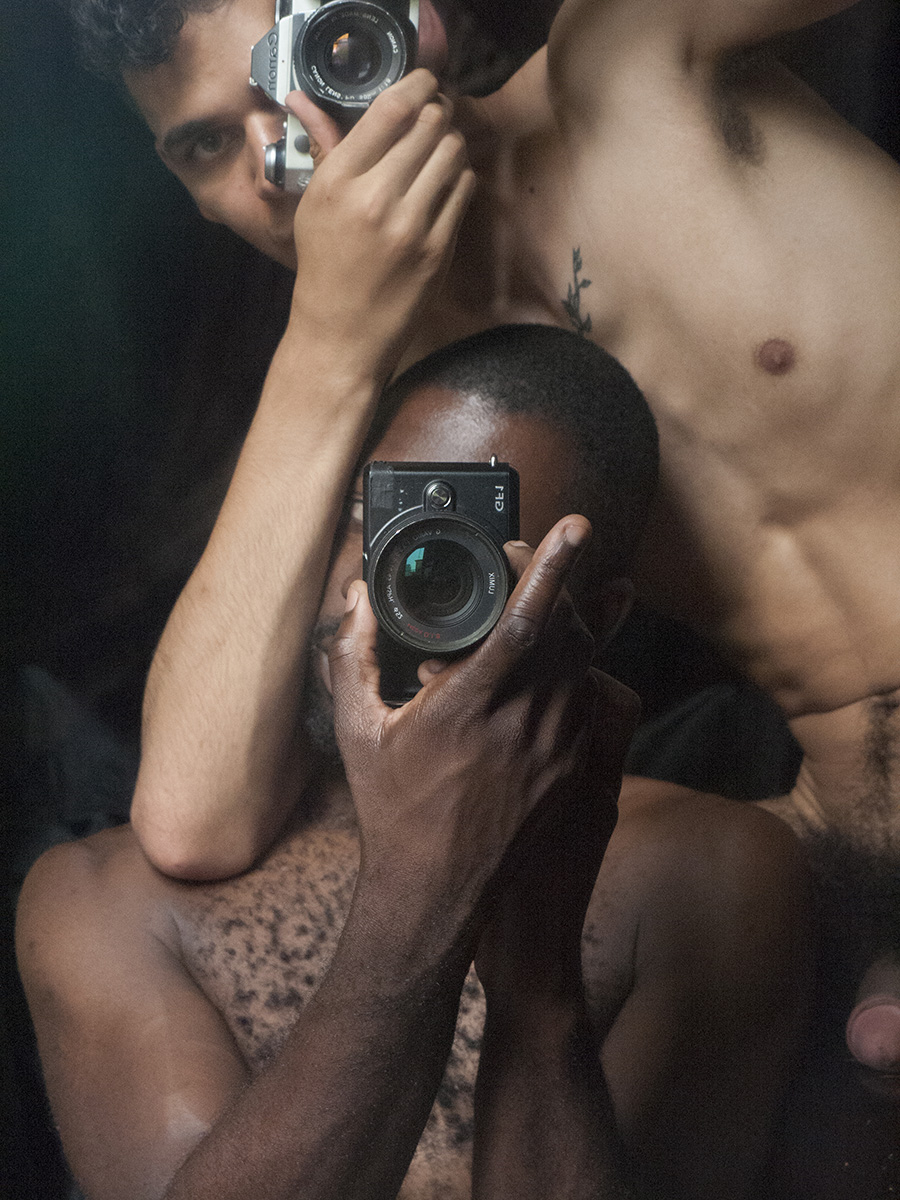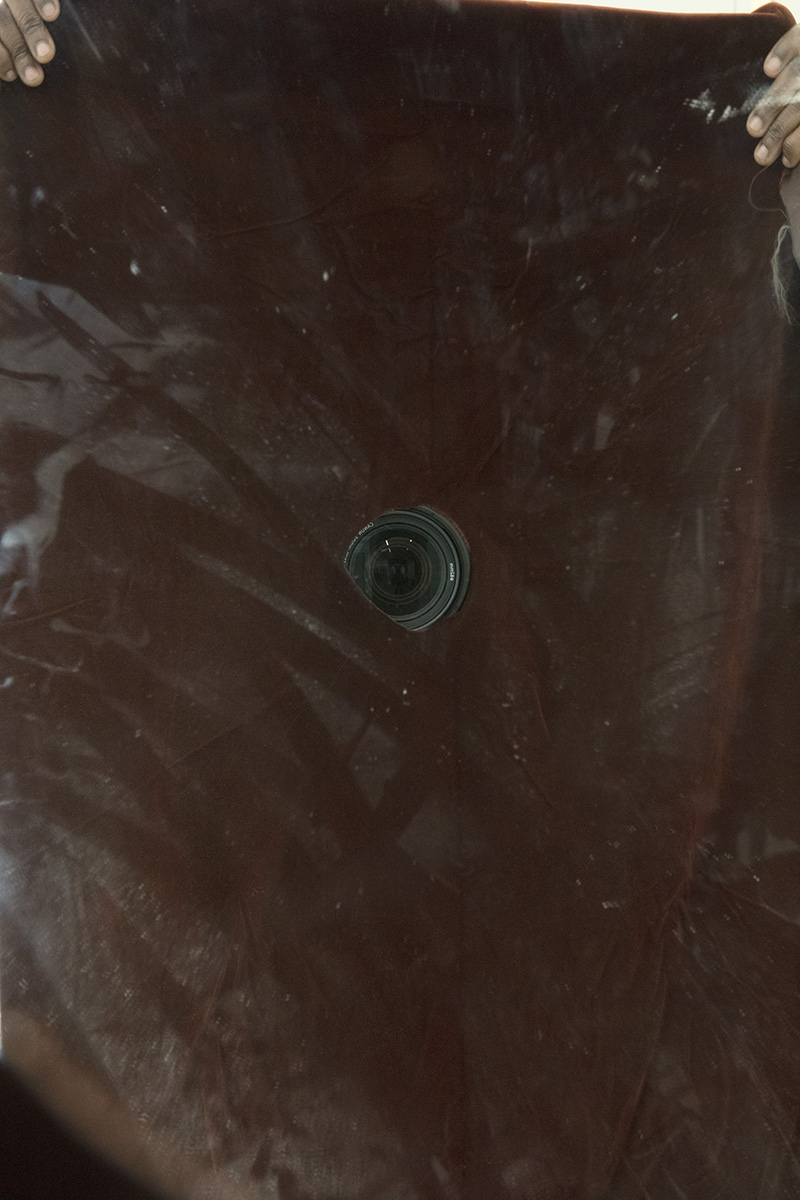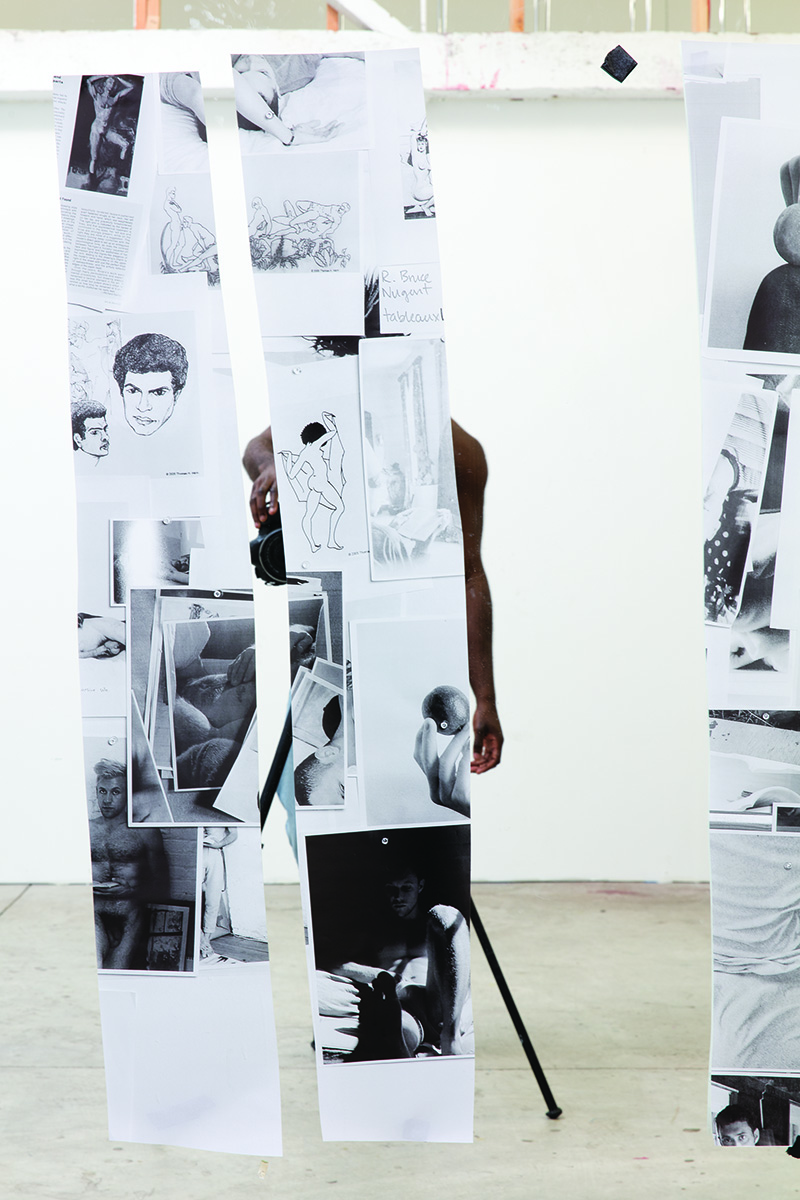Fragments, Remnants, and Glass
Text by Raquel Villar-Pérez
Paul Mpagi Sepuya is an American photographer whose work primarily comprises studio portraiture. His photographs are disorienting: limbs, naked body parts, drapery, mirrors, the artist’s archival material, the apparatus of the photographic act, sitters, and the studio space itself all feature in carefully crafted images that engage the viewer in an active exercise of unpicking the different physical and conceptual elements in the composition. Sepuya challenges the traditional formula of studio portraiture by interrogating established conventions of subject representation, muddling the role of the sitter and of the photographer, and reconceptualising the studio as a subject in its own right through the use of complex visual strategies, including fragmentation, reflections, layered compositions, and latencies.

Sepuya spent the early years of his career making portraits of his lovers, friends, and acquaintances in his bedroom. The subjects display a deep trust in him. The portraits, of homoerotic content, suggest an intimacy that, if on one the hand, is unusual in traditional studio portraiture, on the other reflects the subjects’ vulnerability and a generous openness. Desire is at stake here – not only Sepuya’s desire to photograph his subjects and the reciprocal desire among his subjects, who want to be captured by his camera, but also a sexual longing that radiates from the subjects’ softened gazes.

Over the course of ten or so years, Sepuya produced a vast quantity of portraits that – together with magazine and newspaper cutouts – form an archive of unresolved materials from which he chooses what to include in most of the final images that compose different bodies of work since 2014. Studio Work, 2010-2011 includes collage-like compositions, which are then blended into one through the process of image-making. Informed by the notion of a ‘collage of compressed tenses’, which was articulated by writer and critic Brian O’Doherty in his 2007 work Studio and Cube, Sepuya moves within a recursive loop, re-photographing his photographs and revisiting and re-signifying his friendships and relationships.
Sepuya himself is the most frequently recurring subject in his work. He often appears in close proximity to his sitters, suggesting that the autobiographical portrayal of the queer black body is a radical act of self-creation. In Studio (0X5A0173) (2017), Sepuya is obscured by images of disunified body parts, drawings, notes, and cutouts. A fragment of his right arm can be seen stretching forward to press the shooter of a camera pointed at the viewer, as can two legs of the tripod holding the camera and Sepuya’s left arm resting by his side. The meeting-point between the grey floor and the white wall in the backdrop of the studio forms a horizon line, and a piece of black tape in the upper right-hand corner and the smears at the top indicate that he is positioned in front of a reflective surface – a mirror.

The use of mirrors is central to Sepuya’s practice. Initially, the artist used them as surfaces upon which to organise portraits and cutouts according to different rationales. Eventually, he started tearing and cutting the photographs and creating new compositions on the mirror’s surface. Much the language of photography is a language of violence and domination: ‘shooting’, ‘capturing’, etc, and Sepuya’s ‘ripping’, ‘tearing’, and ‘cutting’ only add to this quiet brutality. In images such as Darkcloth (_1980967) and Darkcloth (_2000142) from the Darkcloth series, the suggestion of the subject (whether Sepuya himself or someone else) via body parts such as fingertips, a hand, a foot, or a shy backside hiding behind a curtain, and marks on a drape, become a visual metaphor for Sepuya’s dissolution rather than self-creation.

Fingerprints, dust, smears, smudges, and tape residues on the glass symbolise presence in Sepuya’s oeuvre. They archive traces of bodies and touch that had been rendered invisible when the background is the reflected white wall of the studio. Dark Room acknowledges the latency of these marks, making them visible by combining them with dark backdrops – black drapery, the camera, tripods, Sepuya’s skin. In the works in the series that feature a camera, Sepuya directs the lens at the viewer, rendering them a subject. In Orifice (2018) the lens appears at the centre of the composition, filling up what Evan Moffitt describes as a ‘glory hole’ in the cloth. This image reveals another latency in Sepuya’s work: for him, the photographer’s lab is analogous to another type of dark room – the semi-private backrooms used for sexual encounters found in some queer spaces. Sepuya represents the construction of queer identity and the development of a photographic practice as similar processes of self-creation that occur in the dark, the results of which are then brought to light.

